
-
Some more shots with the GH4 and 35-100mm f2.8
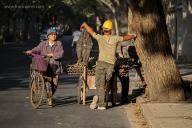
 1410 Outing (132)Ms.jpg1400 x 933 - 1M
1410 Outing (132)Ms.jpg1400 x 933 - 1M
 1410 Outing (159)Ms.jpg720 x 1080 - 857K
1410 Outing (159)Ms.jpg720 x 1080 - 857K
 1410 Outing (170)Ms.jpg1400 x 933 - 2M
1410 Outing (170)Ms.jpg1400 x 933 - 2M
 1410 Outing (182)M2bws.jpg1400 x 933 - 758K
1410 Outing (182)M2bws.jpg1400 x 933 - 758K -
@abolit I think the photographer's skills will be more important to the final image than the technical difference between the two cameras.
-
@johnnymossville You are right and I tried to demonstrate it by posting pictures in this discussion taken with D800, M43 camera and even compact camera.
Actually, for my own experience, a camera makes more difference by its color treatment than its pixel count or sensor size. A great color treatment out of the box can deliver instant pleasure and eases a lot the post processing. I discovered this with the Nikon1 V1 and none of my other camera can compete in term of color treatment. Just amazing. See by yourself here: http://www.personal-view.com/talks/discussion/11546/rare-cine-nikkor-lenses-on-nikon-1#Item_18
The way I am shooting with this camera is good for a personal use, and I will work with the GH4, but I am spending much more time on my GH4 pix to get colors I like, and sometime, I am not fully satisfied.
-
I recently had done different shooting session with my student, using the GH4
You can check the result here posted on my website:
-
Here is one of the picture shot suring the workshop I organized for my students. I shot with the GH4 as main camera and the 12-35mm f2.8. All settings on my website http://www.francperet.com/2014/11/19/painting-with-light/
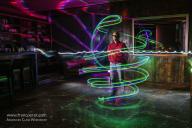
 1410 PaintingLight (26)Ms.jpg1400 x 933 - 1M
1410 PaintingLight (26)Ms.jpg1400 x 933 - 1M -
Another post of GH4 pictures shot with 12-35 f2.8 and 35-100mm f2.8 lenses. Here are 2 samples. Much more to see here:

 1410 Ess Tour (118)Ms.jpg1400 x 933 - 858K
1410 Ess Tour (118)Ms.jpg1400 x 933 - 858K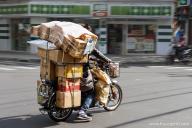
 1410 Ess Tour (104)Ms.jpg1400 x 933 - 942K
1410 Ess Tour (104)Ms.jpg1400 x 933 - 942K -
Hallo Franc Peret, after I havent been on "Personalview" for some month. Its a great pleasure for me to find you, and your open competence, here on the forum now. I enjoy your photos, and your photographic point of view. Thank you !
-
@Benibube Thanks for your message, I am glad to know that you are enjoying my posts.
Here are some more pictures I had done with the GH4. All with indoor light set up (LED and HMI). It was part of my teaching, doing portrait with steady light (different technique than flash) with my students playing fictional characters while creating different mood with different accessories and lighting set up.
This technique in photography is close to what I am doing when lighting a scene for a fiction film. When a Director of photography goes back to Photography. The 2 color pictures are shot with GH4 + Speedbooster + Nikon 55mm f1.2 AIS @f2 (ISO200), the B&W with a Nikon D800 and 85mm f1.4D @f2 (ISO400). Nikon D800 needs higher shutter speed to not get a blurred shot due to the pixel density and Sensor size.
You can check more differences on the post: http://www.francperet.com/category/2014-advanced-workshop/
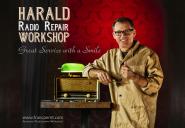
 1411 ADV portrait GH4 (13)Ms.jpg1400 x 967 - 1M
1411 ADV portrait GH4 (13)Ms.jpg1400 x 967 - 1M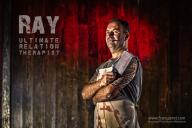
 1411 ADV portrait GH4 (22)M3s.jpg1400 x 933 - 1M
1411 ADV portrait GH4 (22)M3s.jpg1400 x 933 - 1M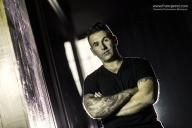
 1411 FW Portrait (135)Ms.jpg1400 x 934 - 756K
1411 FW Portrait (135)Ms.jpg1400 x 934 - 756K -
A new workshop I organized completely shot with the GH4 and 12-35mm f2.8 + Olympus 45mm f1.8
Light set up with white board panel, 2 x HMI (150W) and LED Fresnel (150W).
You can see more sample here: http://www.francperet.com/2014/11/30/special-effects/

 1411 ADV Compo (16)M2s.jpg1200 x 973 - 1M
1411 ADV Compo (16)M2s.jpg1200 x 973 - 1M
 1411 ADV Compo (121)MFs.jpg1200 x 876 - 1M
1411 ADV Compo (121)MFs.jpg1200 x 876 - 1M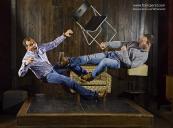
 1411 ADV Compo (152)M2s.jpg1200 x 886 - 1010K
1411 ADV Compo (152)M2s.jpg1200 x 886 - 1010K -
I'm enjoying this thread, keep it going!
-
@johnnymossville Thanks a lot! Here is some more sample shot with the GH4. I am preparing a product shot workshop and work out on one of the most difficult subject to light up!
Being Attractive
Light and composition are more important than the subject itself. There is nothing more true to illustrate this concept than product shots. Product shots are usually done for commercial purpose, and pictures have to be more attractive than the object its self to be considered as successful.
The Magic of light shaping
By learning how to use Light sources, a professional photographer is going to achieve that result, but each object will represent a different challenge according its shape, its reflection, its purpose and the target mood.
Case by Case study
A slice of pizza is not light up and shot the same way than a camera, a jewel or a shower head (which is actually one of the most difficult things to shoot). Only the understanding of quality of light, family of angle, masking with shadow and post processing can make a good shot possible.
Here are some shot to illustrate my purpose. All shot with GH4 + 35-100mm f2.8 @f8, ISO200, 1/50s, Tripod mount.
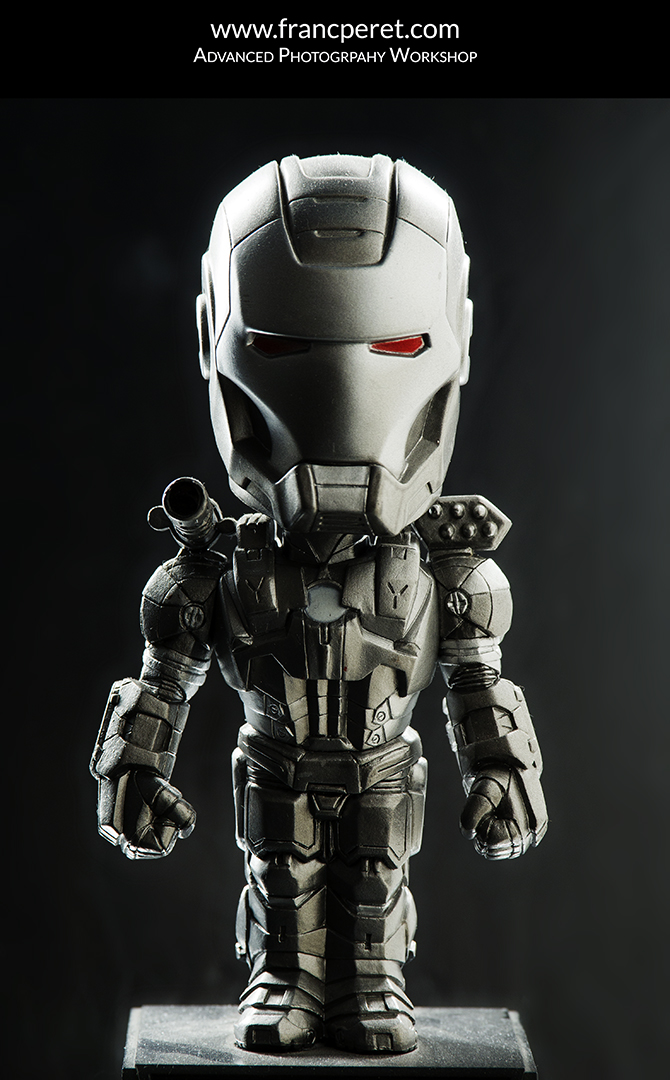
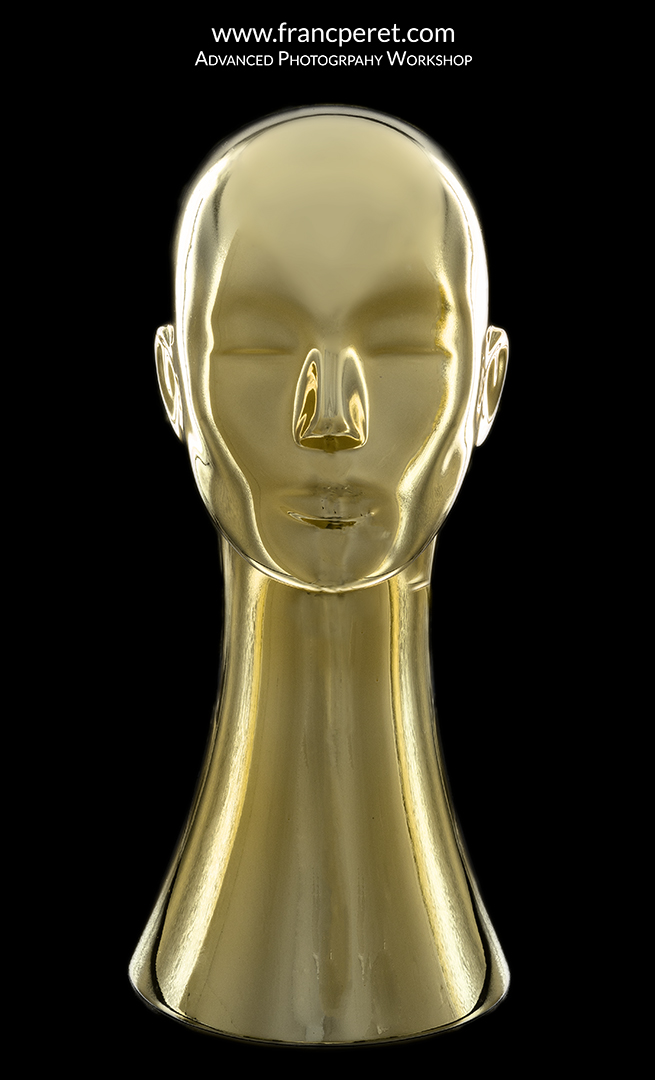
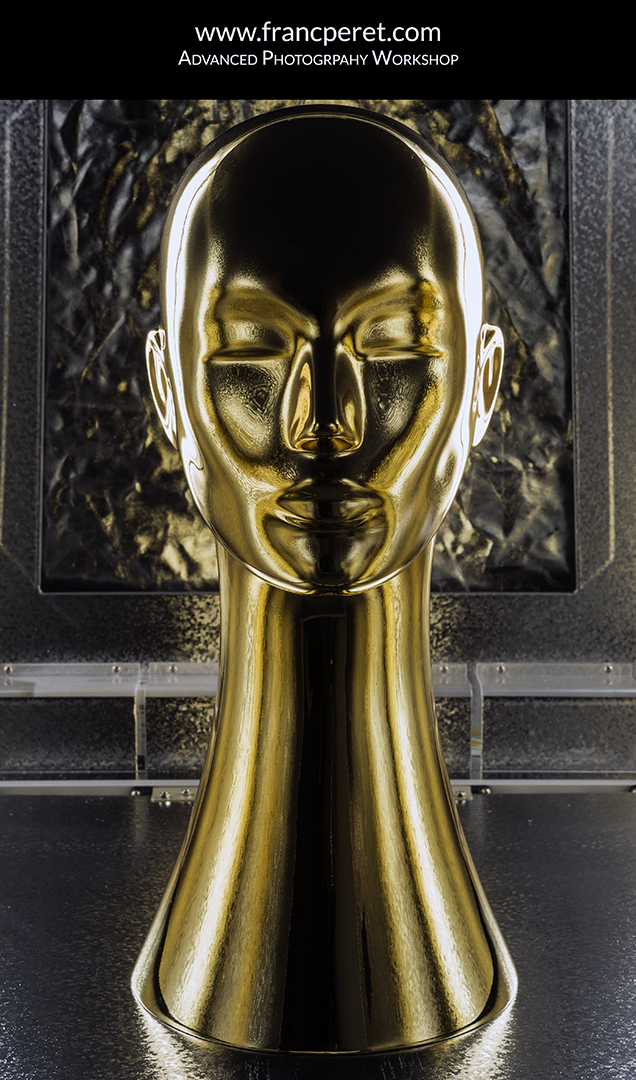
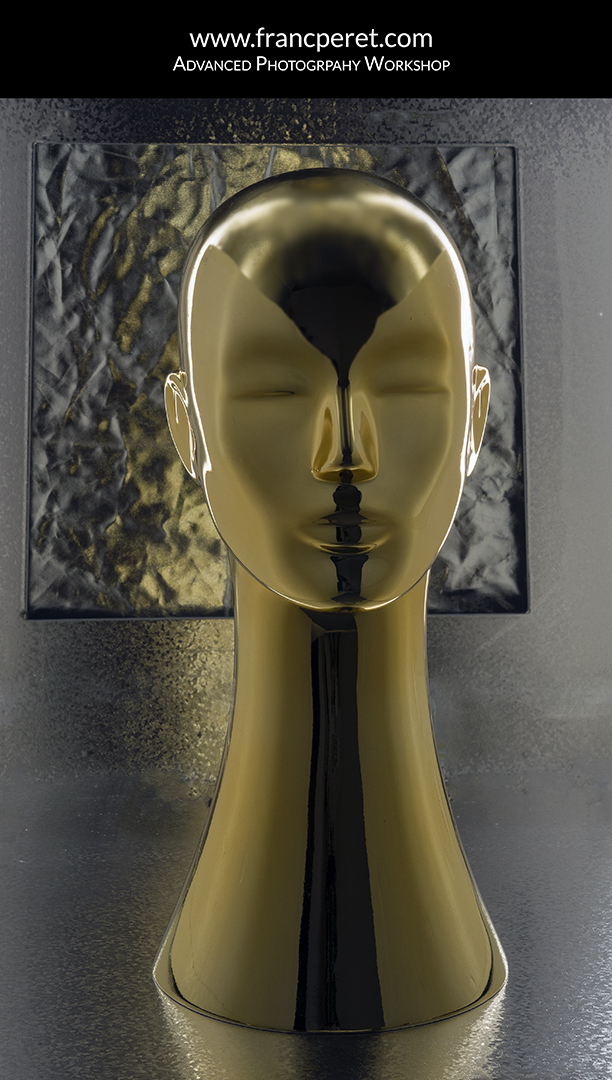
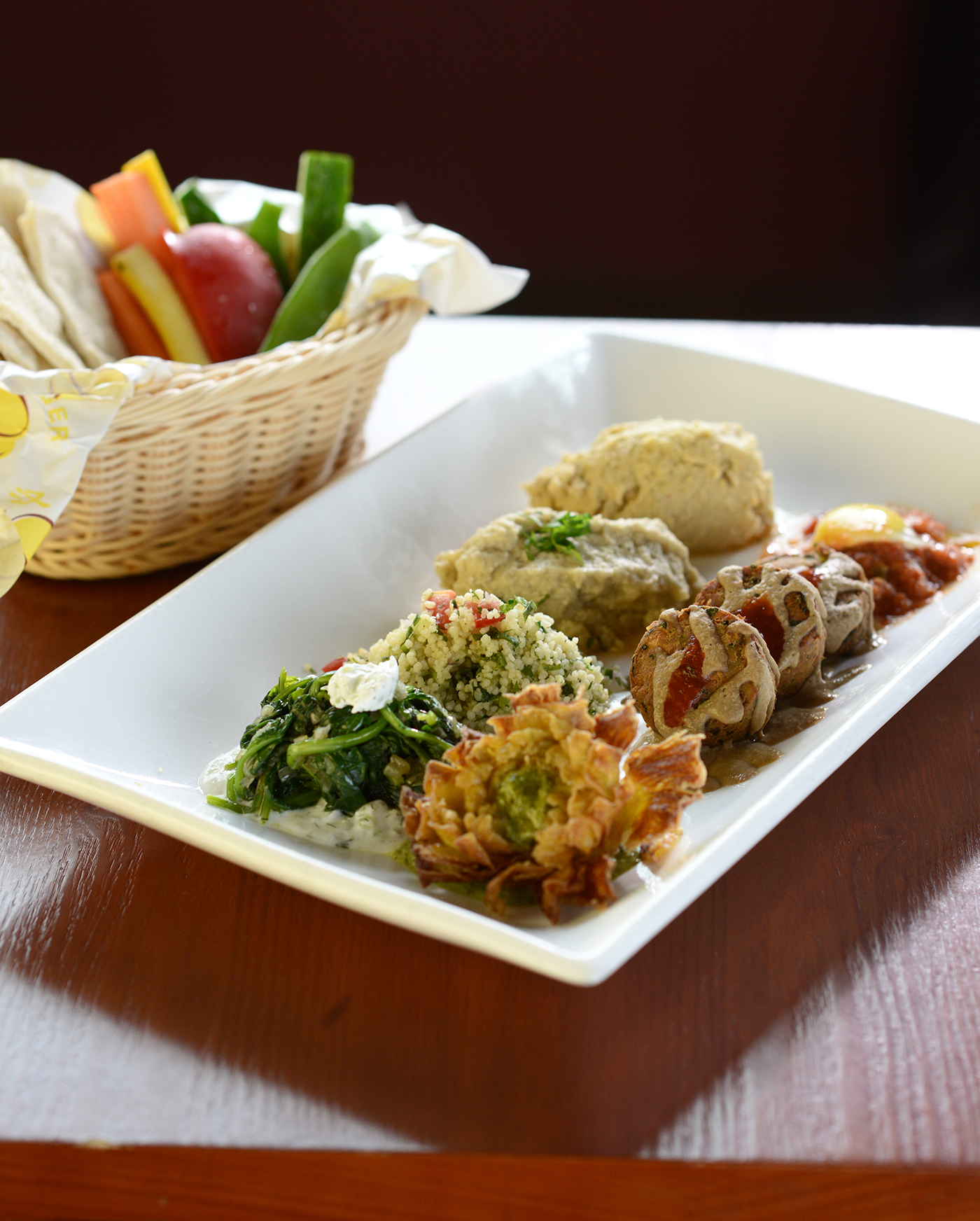
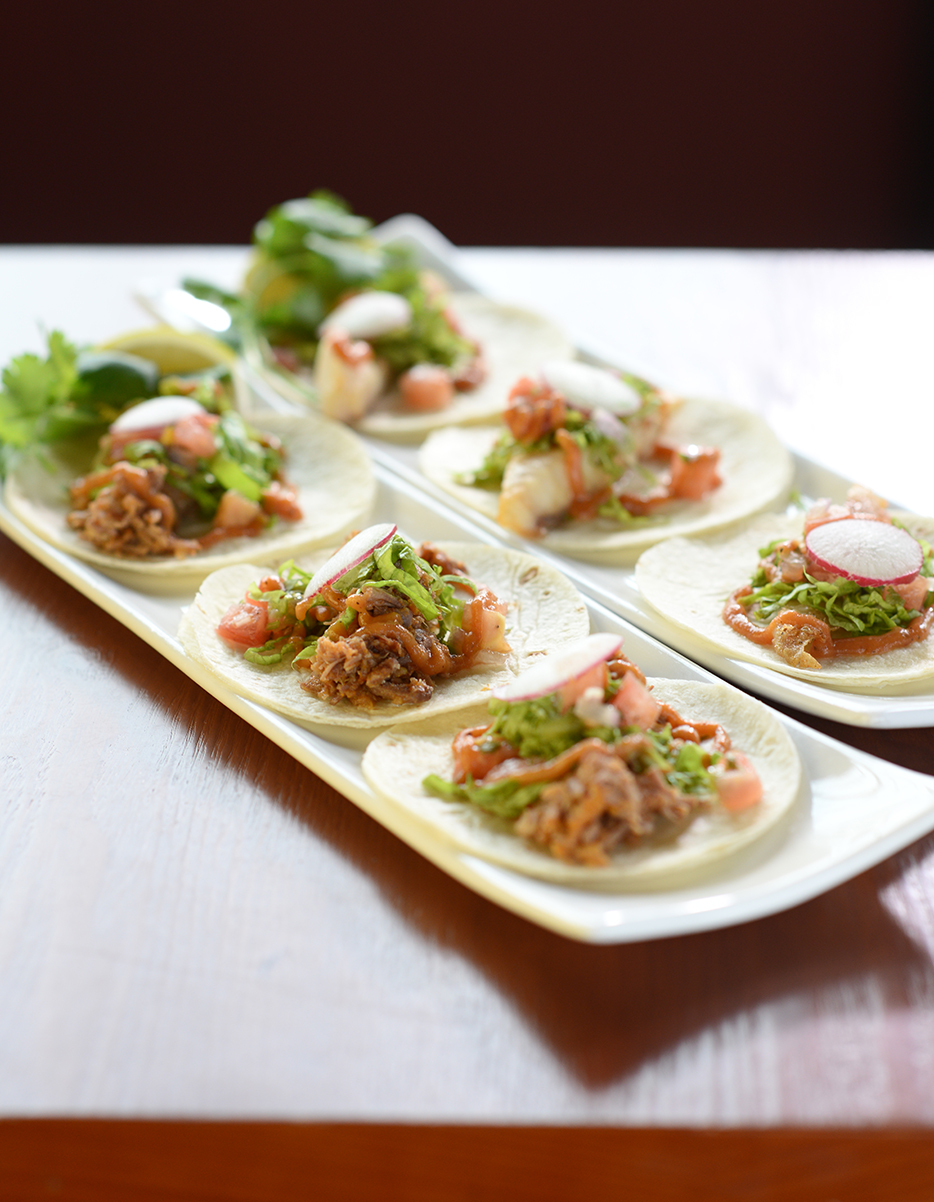

 1411 Robot (12)Ms.jpg670 x 1080 - 423K
1411 Robot (12)Ms.jpg670 x 1080 - 423K
 1411 Goldhead (18)Ms.jpg636 x 1080 - 604K
1411 Goldhead (18)Ms.jpg636 x 1080 - 604K
 1411 Goldhead (27)Ms.jpg655 x 1080 - 267K
1411 Goldhead (27)Ms.jpg655 x 1080 - 267K
 1411 Goldhead (30)Ms.jpg612 x 1080 - 468K
1411 Goldhead (30)Ms.jpg612 x 1080 - 468K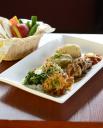
 1411 MenuN (66)Ms.jpg1400 x 1744 - 2M
1411 MenuN (66)Ms.jpg1400 x 1744 - 2M
 1411 MenuN (66)Ms.jpg1400 x 1744 - 2M
1411 MenuN (66)Ms.jpg1400 x 1744 - 2M
 1411 MenuN (51)Ms.jpg934 x 1202 - 722K
1411 MenuN (51)Ms.jpg934 x 1202 - 722K -
I am a bit disappointment of the noise handling of my GH4. We photographed a dimly lit christmas event with a friend. He has Canon 5Dmk3. It is quite annoying that he can use almost every iso he wants (100-10000) but I must always stay below iso800 because of noise. In daylight when exellent quality is the goal the iso200 is also too noisy. Iso100 is much cleaner.
-
removed
-
removed
-
removed
-
sure -- bigger sensors have their benefits concerning sensor noise, but the GH4 results are not so bad if you do not need extremely cropped little sections of your images. this depends a lot of the noise reduction qualities of your RAW development software.
if you work on linux or apple OS X you could take a look on "darktable" (http://darktable.org) and its profiled noise reduction filter. (for technical details: http://www.darktable.org/2012/12/profiling-sensor-and-photon-noise)
Pascal de Bruijn did a great job during the last weeks adding all the necessary GH4 support patches and calculate additional color calibration for the actual release candidates. camera specific noise profiles also got included. (http://darktable.org/redmine/projects/darktable/search?utf8=%E2%9C%93&changesets=1&q=GH4)
only the generic basecurve (gamma response) for panasonic cameras does not fit very well for the GH4. therefore images may look a little bit dark using the the default settings of this actual release candidate. we will see, if a more camera specific basecurve will find its way into the final 1.6 release (expected on 7.12.2014). but it's very simple to install customized basecurves (e.g.: http://users.mur.at/ms/projects/darktable_gh4/basecurve_results/dt-curve-tool-output) if you want to test drive the actual release candidate.
-
I have to agree with @Vesku regarding IQ of GH4.
I don't have GH4 but I friend of mine owns Olympus OM-D EM5 which IQ should be similar to GH4. We took some nice shots of West Virginia waterfalls last fall . The Olympus OM-D images looked acceptable at 25%. At 50% I could see the blotchy pixels and the some noise even at the lowest ISO.
To be honest I don't see any reasons of using 4/3 sensor camera for stills when full frame ones are pretty much affordable nowadays. -
I shoot weddings most of the time and I take pictures and/or videos. The reason for I am finally switching to a gh4 - I actually shoot videos with the gh3 and pictures with a 5dII - is the word "convergence". As already linked by Vitaliy in wedding videography ( http://www.bestmirrorlesscamerareviews.com/2014/11/10/using-the-panasonic-lumix-gh4-for-wedding-photography-an-interview-with-william-innes/ ) the very interesting feature for me is that you can pull out good pictures from a footage (finally). Or you can shoot videos, or you can take good photos. So what is the use of taking with me all that stuff? I know, it depends on what kind of job you want to accomplish, but for me sounds just fine. I will do several tests, of course, but I think this is only the beginning. I started dreaming of this in mid 80's, when I was shooting vhs videos. Now it is reality.
-
Thanks for posting!
To those who are complaining of having too much noise on their GH4 shots, please show us picture samples. As is, it is hard to judge someone else comment without anything to watch and without any datas: jpg? Which preset? raw? which treatment? camera settings? Lens used? Aperture? ISO?
On my side, for every post I had written here, I took the time of uploading my work to sustain my words, ideas and opinion.
You are very welcome to do the same, by respect for people who want to learn something and make up their mind, reading this informative thread.
We are speaking about photography and without pictures to share, words are like wind. Real life pictures, (not pixel peeping chart test or books on a shelve) are needed to sustain any opinion.
Written words doesn't weight much in the balance. Instead by showing us some comparison shots you had taken FF vs M43, good shots I mean, not useless ones (out of focus with wrong exposure settings), we might be well informed about your point.
At least, this would give us an idea of what you usually achieve with whatever camera you are using and this will help us to understand what you consider a good result vs a bad one. And also to see if there was anything wrong about your lens choice, your subject lighting, your camera set up or your post processing.
I am working side by side with Nikon D800, Nikon1 (smaller sensor than M43) and GH4. In certain condition I would prefer the D800, in some others I would chose the GH4 or the Nikon1 V1 or even a point and shoot camera.
Whatever I am using, noise had never been something which bother me that much, as I am not systematically relying on high ISO (photography means "painting with light") and, here, I am posting again my pictures for others to see what i am speaking about.
Here a couple of shot done with the Nikon1 V1 which is 2.7 times smaller than FF sensor of my D800. NIGHT Taxi shots ISO400, f2, 1/13s (Cine Nikkor 10mm f1.8).
NIGHT street working shot ISO100, f0.95, 1/10s (Angenieux 25mm). Being stable and being able to shoot at the right moment are the key of Night shooting pictures. And I am having less bluriness at same shutter speed with my Nikon1 than my D800. with the D800, I would have to push the ISO 8 or 16 times more to get those shots done.
You can see more here: http://www.francperet.com/category/portfolio/photography-portfolio/
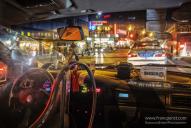
 1411 N1 Sh (141)Ms.jpg1200 x 803 - 937K
1411 N1 Sh (141)Ms.jpg1200 x 803 - 937K
 1411 N1 Sh (94)Ms.jpg723 x 1080 - 580K
1411 N1 Sh (94)Ms.jpg723 x 1080 - 580K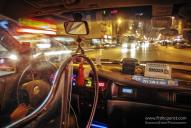
 1411 N1 Sh (131)M2Bs.jpg1200 x 803 - 913K
1411 N1 Sh (131)M2Bs.jpg1200 x 803 - 913K -
Thanks for your opinions of GH4 IQ. My GH4 is just OK for photos and exellent for video. Its noise is equal compared to other m4/3 cameras but not very good if compared to other cameras in its price tag. High iso noise is a limiting factor for ME because if I use over iso400 or iso800 I cant sharpen images and colors too are loosing clean look. I have no samples now (I am in work).
Your samples are so little photos that I cant see any noise properties. I watch my photos with a big screen at a close distance and photos must be at least in 4k resolution for me.
-
Better you get a try on your own with different cameras to get your own experience.
For noise problem, all depends on Camera + Camera set up + Lens combinaison and working habit. I know that nowadays people love to push ISO and some really needs that. If you are mainly shooting indoor sport for local event (bad lighting) you might need it..
I am coming from film generation and I was able to do my photojournalist work in any situation with ISO400 maximum (eceptionally ISO800). 90% of my job was done on Fuji Velvia (ISO50) and Fuji Provia (ISO 100).
GH4 base ISO is already ISO200. I barely use my M43 cameras over ISO400. I am pushing my D800 more often (Up to 1600 or 3200) as low speed renders blurry shot due to the great pixel count, and this is a handicap.
Actually the D800 is much better than the GH4 in Studio with Flash, not for street photography. D800 needs great light and controled environment to really shine. And it does.
I had a Canon 5D3 and it is a more flexible camera, but I still prefer my GH4 or my Nikon1 in low light, as I can work at very low shutter speed without getting blurry.
I posted so many things related to that topic that I am not going to repeat everything again... Take few minutes of your time, you should read the thread and click on some links to see my 24 H Le Mans race report shot in 1998 or other old stuff I had done on film (Archaos and Concert), without the need to push ISO as I couldn't... Hope this can help you to understand my point.
http://www.francperet.com/category/portfolio/photography-portfolio/shooting-sports/ http://www.francperet.com/category/portfolio/photography-portfolio/entertainment/
-
Here are 2 samples in dimly lit event shooted with Canon 5Dmark3 (iso 5000) and GH4 (iso 800). Crop is the same in both photos (about 1600center pixels of 46000). 5D3 JPG, GH4 RAW ACR.
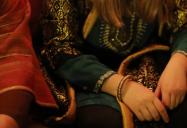
 5M3-5000.jpg1690 x 1157 - 273K
5M3-5000.jpg1690 x 1157 - 273K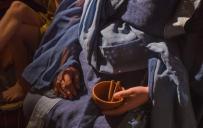
 GH4-800.jpg1661 x 1049 - 345K
GH4-800.jpg1661 x 1049 - 345K -
here is an example to demonstrate some uncommon techniques to use the GH4 for extreme low light conditions by utilizing temporal video noise filters.
the 100% cut-out is taken form from a video shot at 1600ISO using ETC and a (not outstanding) telephoto zoom lens wide open (=>1000mm/f5.6 equivalent). i used a very uncommon manual shutter speed: 1/6 sec -- yes, that's far below the usual shutter speed settings for a 25fps movie, but the GH4 concedes you such a setting for special purposes. on the left side you can see a typical still image taken out of the 50Mbps FHD video file.
but using video recordings as source material for still images offers additional capabilities. in this case your are not limited to spatial noise reduction filters of photo editing software, you can also utilize temporal noise canceling techniques from video processing. for nowadays photographers this can be seen similar to the stack processing in HDR exposure series.
the right side of my example is using the ffmpeg video filter settings:
-vf hqdn3d=luma_spatial=2:luma_tmp=50,smartblur=ls-.8:lr=3
this will reduce the noise by comparing 2 pixels aside and 50 frames in the past and sharpen it with a usual unsharp mask. high ISO output from the GH4 suffers from luma, not chroma, noise! that's very different to typical canon full frame material. so you have to use different strategies to eliminate this interferences in both cases.
well it's just a very simple demonstration -- not an impressing aesthetic picture as others would like to see --, but it could give you an idea how good video capturing cameras can open new opportunities for still photography. sure, you can argue, you can simply reach the same goal by using bigger sensors and longer exposure times, but i would counter, that it is often much more realistic to find unblurred frames/sequences in an video than using the classical long exposure attempt in real live.
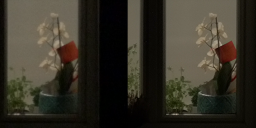
 Screenshot.png944 x 380 - 390K
Screenshot.png944 x 380 - 390K -
Thanks
That is interesting. I have thought about stacking with 12 fps RAW photos. Of course the subject mus be stationary. Much work still to get one photo. I must test with christmas lights.
With a stationary subject I can still use a tripod and long SS.
-
yes -- a stack of raw photos or raw video sources would definitely lead to better results. it isn't that hard to realize. ffmpeg will accept still image sequences the same way as video clips.
but you have to be aware that hqdn3d is only a very simple video noise reduction filter working in the time domain. there are much more advanced solutions available (e.g. neat), that add optical flow based motion compensation etc.
but this simple example was only thought as little hint, to get a vague impression of hybrid approaches in nowadays still-photo+video-work. i don't want to overestimate the merits of this specific camera model. a more open tool, like the "apertus" camera, in the price range of a consumer mass product would satisfy my personal needs much more. and that's exactly the point, where i often feel a little bit jealous as lumix user watching all those canon / magic latern neighbors. their free developer community is far beyond anything we can think of here in lumix/panasonic land... -- but that's another topic...
Howdy, Stranger!
It looks like you're new here. If you want to get involved, click one of these buttons!
Categories
- Topics List23,992
- Blog5,725
- General and News1,354
- Hacks and Patches1,153
- ↳ Top Settings33
- ↳ Beginners256
- ↳ Archives402
- ↳ Hacks News and Development56
- Cameras2,367
- ↳ Panasonic995
- ↳ Canon118
- ↳ Sony156
- ↳ Nikon96
- ↳ Pentax and Samsung70
- ↳ Olympus and Fujifilm101
- ↳ Compacts and Camcorders300
- ↳ Smartphones for video97
- ↳ Pro Video Cameras191
- ↳ BlackMagic and other raw cameras116
- Skill1,960
- ↳ Business and distribution66
- ↳ Preparation, scripts and legal38
- ↳ Art149
- ↳ Import, Convert, Exporting291
- ↳ Editors191
- ↳ Effects and stunts115
- ↳ Color grading197
- ↳ Sound and Music280
- ↳ Lighting96
- ↳ Software and storage tips266
- Gear5,420
- ↳ Filters, Adapters, Matte boxes344
- ↳ Lenses1,582
- ↳ Follow focus and gears93
- ↳ Sound499
- ↳ Lighting gear314
- ↳ Camera movement230
- ↳ Gimbals and copters302
- ↳ Rigs and related stuff273
- ↳ Power solutions83
- ↳ Monitors and viewfinders340
- ↳ Tripods and fluid heads139
- ↳ Storage286
- ↳ Computers and studio gear560
- ↳ VR and 3D248
- Showcase1,859
- Marketplace2,834
- Offtopic1,320




